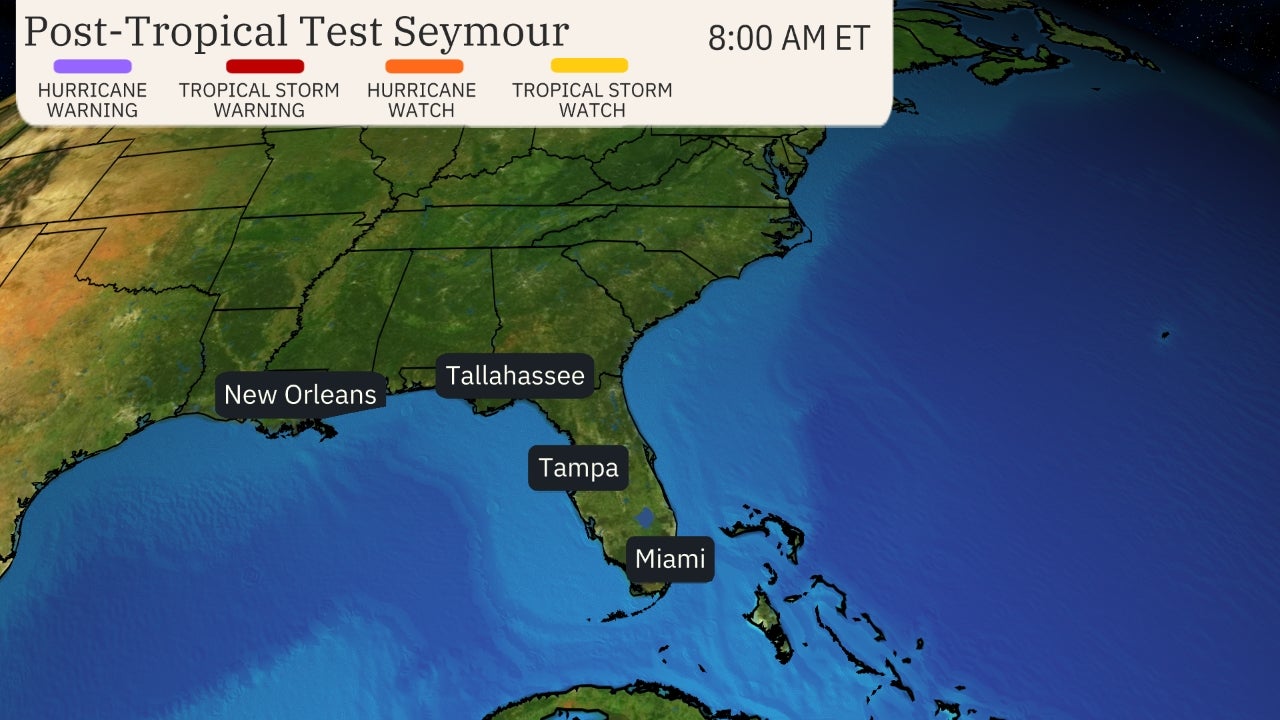weather.com meteorologists
Claudette will continue to pose a threat of flooding rain and a few tornadoes in parts of the Southeast into Monday morning.
The forecast track for Claudette takes the system through the Carolinas into Monday, and it could become a tropical storm once again as it begins to move off the East Coast.
Alabama was hit hard by the impacts from Claudette on Saturday, including flooding rain, strong winds and tornado damage. See the link below for updates on impacts from the storm.
(MORE: Claudette Causes Damage in the South)
 Projected Path and Current Info
Projected Path and Current InfoTropical storm warnings have been issued for much of the eastern North Carolina coast, including Pamlico and Albemarle Sounds. Winds could reach 40 mph in this area by early Monday.
 Tropical Storm Alerts
Tropical Storm AlertsClaudette's bands of rain might produce localized flash flooding in portions of the Carolinas through early Monday. A few tornadoes could also spin up in this same general area.

Flash flood watches have been issued by the National Weather Service for this potential threat of flooding rain in the Southeast.
Rainfall totals of 2 to 4 inches (locally up to 6 inches) are expected from northern Florida and southern Georgia into central and coastal South Carolina and eastern North Carolina through Monday morning, according to the National Hurricane Center.

As the storm comes off the Southeast coast, a storm surge of 1 to 3 feet is also possible in the North Carolina Outer Banks.
Most of the impacts from Claudette should be off the East Coast by the second half of Monday.
Tropical Storm Claudette Recap
Claudette had a lengthy genesis story dating back to the beginning of June.
Initially, a very large spin in the atmosphere over Central America, called the Central American Gyre, produced heavy rain from southern Mexico to Panama. That gyre eventually broke down and produced both Claudette and Tropical Storm Dolores in the eastern Pacific.
As the disturbance that formed into Claudette came north from the Bay of Campeche, it became lopsided to the east due to dry air filtering in from the west and northwest and a surge of winds out of the west aloft.
Satellites found winds in excess of 40 mph in the eastern side of the disturbance on June 18th, but the Hurricane Hunters only found a very disorganized circulation to the west of most of the thunderstorm activity.
Claudette formed into a tropical storm only after crossing the shoreline into Louisiana early on June 19th. This isn't the first time a named storm has formed over land.
In 2020, a tropical depression became Tropical Storm Sally over the Florida Everglades.
A tropical depression formed in 2016 while crossing the east-central Florida coast near Jensen Beach, then intensified into a tropical storm just inland of Palm Bay. That storm then rode Interstate 95 northward to near Savannah as a tropical storm before moving offshore.
Claudette's worst impacts hit parts of southeast Louisiana, the Florida Panhandle and Alabama late June 18 through June 19.
A wind gust of 81 mph was recorded in Pensacola Beach, Florida, where some windows were blown out of at least one hotel and a tractor-trailer reportedly blew over on a bridge.
Wind gusts of 40 to 55 mph were reported along the Gulf Coast from Mississippi to Florida. A 46 mph wind gust was reported near Petit Bois Island, Mississippi, and a 50 mph gust was reported near Panama City Beach.
Claudette produced a storm surge of 5.49 feet at Waveland, Mississippi, 4.2 feet at Bayou La Batre Bridge, Alabama, and just over four feet at Shell Beach, Louisiana, early June 19.
A tornado caused significant damage in the Brewton, Alabama, area early June 19.
More than 10 inches of rain fell in eastern Louisiana near Slidell.
Central Alabama was also soaked by heavy rain that triggered flooding in the Tuscaloosa and Birmingham areas late June 19. One location in the Tuscaloosa area picked up more than 9 inches of rainfall.
The Weather Company’s primary journalistic mission is to report on breaking weather news, the environment and the importance of science to our lives. This story does not necessarily represent the position of our parent company, IBM.
The Weather Company’s primary journalistic mission is to report on breaking weather news, the environment and the importance of science to our lives. This story does not necessarily represent the position of our parent company, IBM.

No comments:
Post a Comment